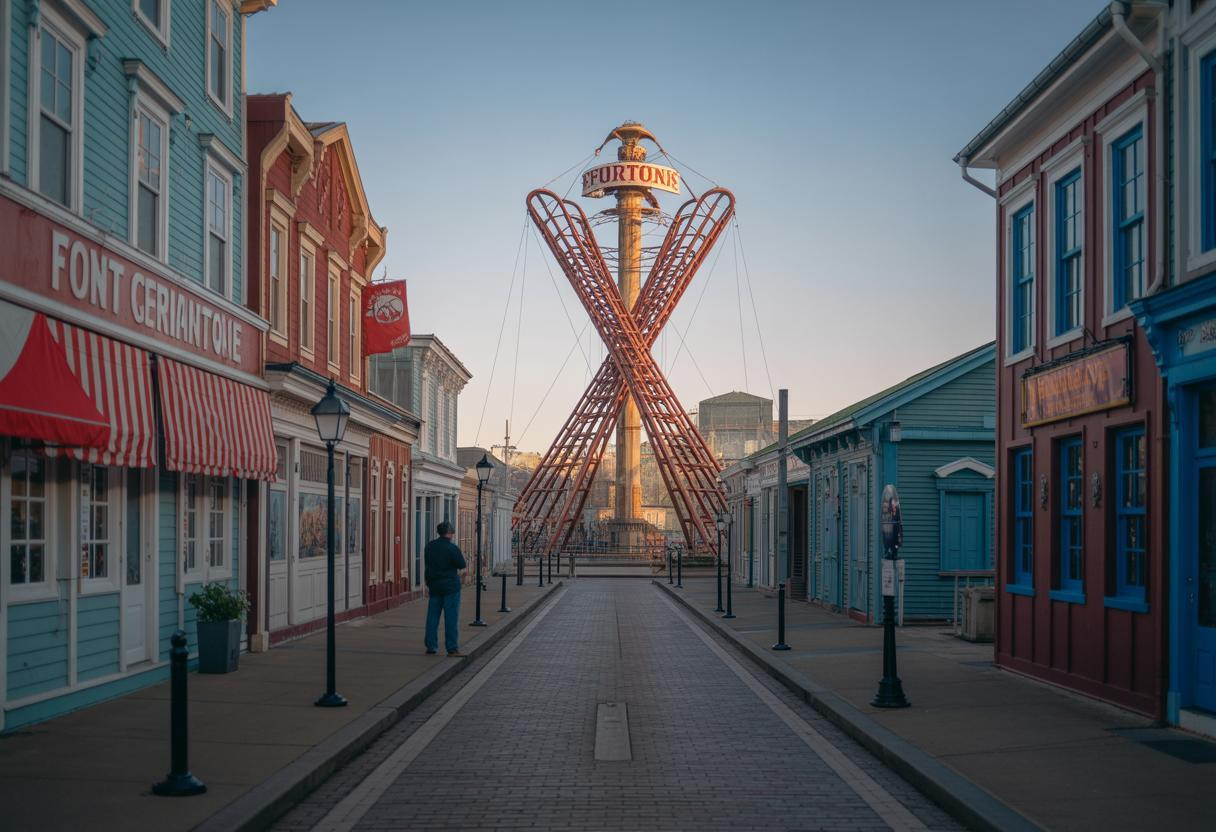When Jim Bolin built Casey, Illinois’ first giant wind chime in 2011, he had no idea his small town would become home to 12 Guinness World Records and transform into a tourism magnet drawing 500 daily visitors. This unexpected success story reveals how unconventional thinking can revitalize entire communities while challenging traditional approaches to rural economic development.
The remarkable transformation of a declining midwest town
Casey faced the same struggles as countless small Midwest communities – factory closures, population decline, and a withering downtown. With just 2,700 residents, the town needed a dramatic solution. Bolin, a pipeline maintenance contractor, leveraged his industrial expertise and workshop resources to create something unprecedented: the world’s largest everyday objects.
The strategy worked beyond expectations. Casey now hosts attractions ranging from a 60-foot pitchfork to a 32-foot rocking chair, each certified by Guinness World Records. Local businesses like Casey’s Candy Depot directly attribute their success to the increased foot traffic, while downtown property values have rebounded significantly.
Why giant objects succeeded where traditional tourism failed
Strategic innovation through existing resources
Unlike conventional tourism strategies that require massive capital investment, Bolin’s approach utilized existing industrial infrastructure. His pipeline maintenance company provided the heavy machinery, materials, and technical expertise needed to fabricate oversized sculptures. This resource optimization created a streamlining approach that maximized efficiency while minimizing initial costs.
Community identity through authentic storytelling
The choice of objects wasn’t random – wind chimes, rocking chairs, and mailboxes resonate with Midwest cultural identity. These items feel familiar yet extraordinary, creating an emotional connection that traditional attractions often lack. The personalized community spaces approach transformed Casey’s downtown into a destination that feels both authentic and Instagram-worthy.
The surprising psychology behind roadside attraction success
Research shows that physical, interactive experiences create stronger memories than passive tourism. Casey’s attractions encourage visitors to climb, touch, and photograph – generating the social media content that drives modern tourism. The World’s Largest Mailbox even allows visitors to mail letters, creating a functional experience that extends beyond photo opportunities.
The town’s success challenges assumptions about rural tourism. While many communities invest in conventional attractions like museums or festivals, Casey’s model proves that novelty and record-breaking achievements can generate sustained visitor interest. The continuous addition of new objects maintains curiosity and encourages repeat visits.
Critical lessons for community development leaders
Leverage individual entrepreneurial vision
Casey’s transformation depended heavily on one person’s commitment and resources. This creates both opportunity and vulnerability. Communities seeking similar success must identify local entrepreneurs with both vision and capacity, then provide municipal support for their initiatives.
Balance novelty with sustainability
The model’s long-term viability remains uncertain. Novelty-based tourism can face fatigue, and competing towns adopting similar strategies could dilute Casey’s uniqueness. However, the town’s commitment to continuous innovation – adding new records and expanding to neighboring communities – suggests awareness of this challenge.
Implementing the “go big” strategy in your community
Successful replication requires three key elements: technical expertise, community buy-in, and strategic marketing. Communities must assess their existing industrial resources, identify potential record-breaking opportunities, and develop partnerships with local businesses to maximize economic impact.
The environmental considerations remain largely unexplored. While Casey’s attractions appear durable, communities should consider environmental impact assessments for large-scale construction projects, especially regarding materials sourcing and long-term maintenance requirements.
The future of unconventional rural tourism
Casey’s success demonstrates that small communities can compete in the attention economy by embracing their unique assets rather than copying urban tourism models. The town’s story offers hope for rural areas seeking creative solutions to economic challenges, proving that sometimes the most effective strategy is simply to go big or go home.
